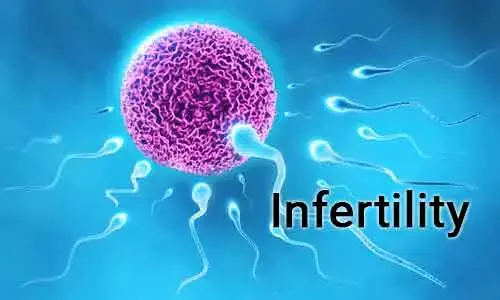- Home
- Medical news & Guidelines
- Anesthesiology
- Cardiology and CTVS
- Critical Care
- Dentistry
- Dermatology
- Diabetes and Endocrinology
- ENT
- Gastroenterology
- Medicine
- Nephrology
- Neurology
- Obstretics-Gynaecology
- Oncology
- Ophthalmology
- Orthopaedics
- Pediatrics-Neonatology
- Psychiatry
- Pulmonology
- Radiology
- Surgery
- Urology
- Laboratory Medicine
- Diet
- Nursing
- Paramedical
- Physiotherapy
- Health news
- Fact Check
- Bone Health Fact Check
- Brain Health Fact Check
- Cancer Related Fact Check
- Child Care Fact Check
- Dental and oral health fact check
- Diabetes and metabolic health fact check
- Diet and Nutrition Fact Check
- Eye and ENT Care Fact Check
- Fitness fact check
- Gut health fact check
- Heart health fact check
- Kidney health fact check
- Medical education fact check
- Men's health fact check
- Respiratory fact check
- Skin and hair care fact check
- Vaccine and Immunization fact check
- Women's health fact check
- AYUSH
- State News
- Andaman and Nicobar Islands
- Andhra Pradesh
- Arunachal Pradesh
- Assam
- Bihar
- Chandigarh
- Chattisgarh
- Dadra and Nagar Haveli
- Daman and Diu
- Delhi
- Goa
- Gujarat
- Haryana
- Himachal Pradesh
- Jammu & Kashmir
- Jharkhand
- Karnataka
- Kerala
- Ladakh
- Lakshadweep
- Madhya Pradesh
- Maharashtra
- Manipur
- Meghalaya
- Mizoram
- Nagaland
- Odisha
- Puducherry
- Punjab
- Rajasthan
- Sikkim
- Tamil Nadu
- Telangana
- Tripura
- Uttar Pradesh
- Uttrakhand
- West Bengal
- Medical Education
- Industry
Parental subfecundity or use of MAR doesn't negatively impact reproductive health of sons

Infertility is an increasing global health problem,affecting approximately 15% of couples worldwide and male factor infertility isa major contributing factor. The decline in couple fecundity presumably iscaused by biological, social, and behavioral aspects. It has been suggestedthat family planning and use of contraception during the past century haveincreased subfecundity. The most fecund couples have fewer children, whereascouples with low fecundity produce more children than before due to fertilitytreatment. This hypothesis assumes that intergenerational transmission ofsubfecundity is substantial, which is poorly documented.
During the last decades, an increasing number of childrenhave been conceived by use of medically-assisted reproduction (MAR).Medically-assisted reproduction consists of a wide range of treatment optionsdepending on the underlying cause of infertility; from ovulation induction andintrauterine insemination (IUI) used in couples without male factorinfertility, to the more invasive and advanced techniques, such as in vitrofertilization (IVF) or intracytoplasmic sperm injection (ICSI). It is wellknown that poor semen quality is a major contributing cause of coupleinfertility, and for years, couples where the male has severely poor semenquality needed donor sperm to achieve a pregnancy by IVF.
Male factor infertility remains a major global healthproblem and natural concerns have been raised on whether poor semen quality isthe result of intergenerational transmission to the next male generations.Further, with the increasing use of MAR, in particular IVF and ICSI, there is aneed to investigate if any paternally inherited or technically associatedadverse effects may exist on reproductive health.
A cohort study carried out by Linn H. Arendt and team wasbased on total of 1,058 men in the Fetal Programming of Semen quality cohortfrom the Fetal Programming of Semen quality (FEPOS) cohort, a subcohort nestedwithin the Danish National Birth Cohort (DNBC).
From 2017–2019, men were recruited and provided semen andblood samples. Information on parental time to pregnancy and use ofmedically-assisted reproduction (including type of treatment) as well asdemographic, health, and lifestyle factors were available. Semencharacteristics (semen volume, sperm concentration, total sperm count, spermmotility, and morphology), testicular volume, and reproductive hormone levels(follicle stimulating hormone, luteinizing hormone, testosterone, estradiol,sex hormone-binding globulin, and free androgen index) were noted.
Overall, semen quality and levels of reproductive hormoneswere not lower among sons of subfecund parents reporting a time to pregnancy>6 months or use of intrauterine insemination. Sons conceived after in vitrofertilization or intracytoplasmic sperm injection, had a higher semen concentration(29%) and a higher percentage of sperm with normal morphology (20%), but with95% CI overlapping the null. Moreover, these sons had slightly higher estradiollevels (30%). The absolute differences seen were small, and the clinicalsignificance of these differences are unknown.
In this nationwide population-based cohort study, authorsfound no major difference in semen quality or reproductive hormones in sonsconceived by subfertile couples or with the use of MAR. Thus, these data do notsupport the hypothesis that parental subfecundity was inherited, thus,affecting the semen quality of male offspring or that reproductive health insons was affected by parental MAR treatment.
In conclusion, authors found no evidence to support thehypothesis that parental subfecundity or use of MAR negatively affectsreproductive health in male offspring measured by semen quality or testicularvolume. However, they found a slightly altered hormonal profile of menconceived following IVF or ICSI. These results are reassuring for the manycouples worldwide struggling with subfecundity, but contradict previousfindings. The findings of this study thus need replication in futureindependent studies.
Source: Linn H.Arendt, Anne Gaml-Sorensen, Andreas Ernst; Fertilityand Sterility
MBBS, MD Obstetrics and Gynecology
Dr Nirali Kapoor has completed her MBBS from GMC Jamnagar and MD Obstetrics and Gynecology from AIIMS Rishikesh. She underwent training in trauma/emergency medicine non academic residency in AIIMS Delhi for an year after her MBBS. Post her MD, she has joined in a Multispeciality hospital in Amritsar. She is actively involved in cases concerning fetal medicine, infertility and minimal invasive procedures as well as research activities involved around the fields of interest.
Dr Kamal Kant Kohli-MBBS, DTCD- a chest specialist with more than 30 years of practice and a flair for writing clinical articles, Dr Kamal Kant Kohli joined Medical Dialogues as a Chief Editor of Medical News. Besides writing articles, as an editor, he proofreads and verifies all the medical content published on Medical Dialogues including those coming from journals, studies,medical conferences,guidelines etc. Email: drkohli@medicaldialogues.in. Contact no. 011-43720751


